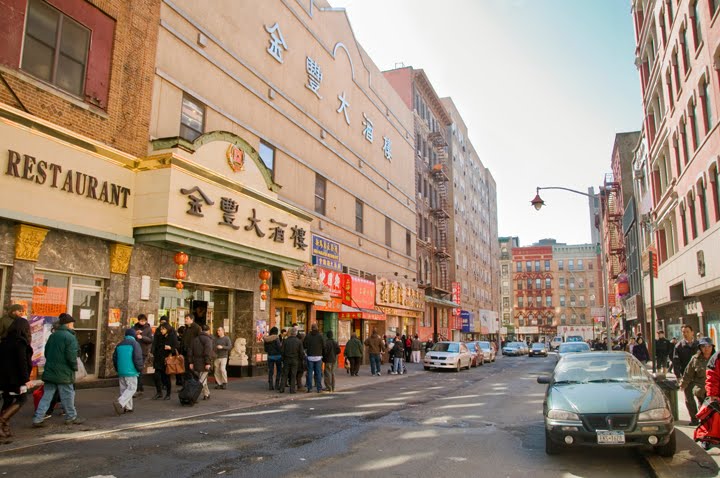
The clattering carts have been omitted, but owners are hoping the 10-seat Chef's Counter-where diners can overlook chefs creating the bao and dumplings destined for the bamboo steamers (or the fryer)-will make up for it. By comparison, the new restaurant has only 2,000-square-feet-and sadly, no carts. The palatial downtown restaurant boats 20,000-square-feet of space for dozens of carts to meander through big banquet tables. We get our childhood favorites we banter with the dim sum cart ladies and we reminisce about the hours we spent in high school hanging out at Elizabeth Center across the street.Jing Fong, the largest dim sum restaurant in the northeast, debuts their darling smaller sibling Monday evening when the Upper West Side extension soft opens. Every now and then, when a craving for har gow (shrimp dumplings) and law bok go (turnip cake) hits, a small group of us would head to Jing Fong. I still drop in during special occasions, but dim sum has also evolved into an activity I share with other first-generation Chinese-Americans. I joined my family’s weekly dim sum sessions well into adulthood and only stopped when I moved away from Sunset Park post-college. They have a waiter-friend who can help us skip the line they can order food in a language they understand and they know the etiquette and nuances of the experience. For my parents and those who made the United States their second home, going to Chinese restaurants like Jing Fong not only brought a sense of familiarity, but also allowed them a sense of ownership and belonging where they could take charge. Dim sum halls are a gathering place where Chinese-Americans of all generations could feel comfortable. Jing Fong’s closing feels like another step back for a neighborhood that was already trying to navigate a complicated transition. First-generation kids-the same ones who had been nudged into white-collar careers to avoid the exhausting and low-paying service work our parents did-had returned to take over longtime businesses ( Nom Wah’s Wilson Tang and Sophia Tsao of Po Wing Hong, for example), while others (like 12 Pell’s Karho Leung) were opening ventures that, while not necessarily traditional, were tied in some way to their Chinese-American and more specifically, Chinatown, upbringings. More recently though, there had been some optimism in my dad’s commentary. As immigrants from his generation who were part of the 1970s and '80s wave began to retire, they didn’t have anyone to inherit their stores and restaurants. What he rarely said, but his tone always implied, was that it was changing for the worse, that gentrification was taking away the Chinese mom-and-pops he knew and loved. Over the years, my dad-himself an immigrant restaurant worker-would often remark that Chinatown was changing. It’s sad to know that when we’re on the other side of the pandemic, there will be fewer dim sum halls for all of this to happen in.
:no_upscale()/cdn.vox-cdn.com/uploads/chorus_asset/file/8865113/NS019416__1_.jpg)
Dim sum isn’t really dim sum without the organized chaos and rituals-the jostling with strangers over the last steamer basket of chicken feet, the futile act of making eye contact with a server for your tea refill, or the bumping into an auntie you haven’t seen in years only to be peppered with increasingly invasive personal questions (Did you find a new job? When are you getting married? You’re definitely having a second baby, right?). While New Yorkers can continue to order the restaurant’s food for pickup and delivery (Jing Fong’s Upper West Side offshoot will also remain open), the experience will be lacking.

With red-paneled walls, soaring chandeliered ceilings, and rows of giant round tables, the bustling restaurants are not only venues for countless celebrations-birthdays, weddings, and babies’ 100-day milestones-but act as a community hub, a place where news and gossip are shared, where introductions between recent and longtime immigrants are made, and where first-generation Chinese-American kids like myself try to maintain the oft-tenuous ties to our roots. It’s not an exaggeration to say I grew up in those Chinese banquet halls. Depending on where this friend lived, we’d meet on a nearby corner and meander our way to the week’s massive restaurant of choice-usually to what’s currently known as Pacificana, but occasionally to Park Asia or the now closed East Harbor. Every Sunday, I’d eagerly wait for my mom to wake up and dial the number of a family friend to confirm a time and a place. Growing up in Brooklyn’s Sunset Park-one of NYC’s largest Chinese communities-dim sum was as much a part of my weekly routine as school and Saturday morning cartoons.


 0 kommentar(er)
0 kommentar(er)
